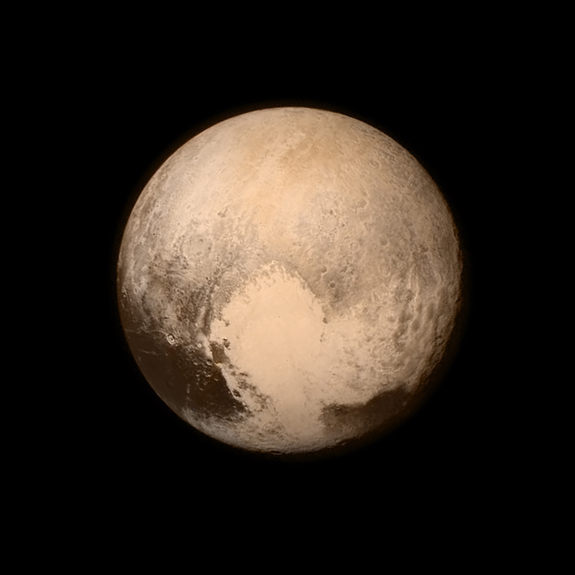
A black-and-white global map of Pluto produced from images taken by NASA’s New Horizons space probe.
Credit: NASA/JHUAPL/SWRI
A black-and-white map of Pluto’s surface — that includes all available and resolved images taken by NASA’s New Horizons spacecarft — is the most comprehensive view yet of the icy world.
Prior to 2015, the dwarf planet Pluto looked like little more than a fuzzy speck of light hovering at the edge of the solar system. That all changed when NASA’s New Horizons space probe made its close flyby of Pluto on July 14, 2015. Since then, the agency has released a flood of beautiful , detailed and scientifically surprising photos of the icy world.
The new map brings together all the images that NASA has been slowly releasing, into a single global overview of the solar system’s largest known dwarf planet.
The New Horizons probe did not orbit Pluto, but instead made a quick flyby of the dwarf planet before heading further out into the Kuiper Belt, the band of icy, rocky bodies that loop around the sun beyond the orbit of Neptune. The probe is expected to make a flyby of another body in that region in 2019.

An image of Pluto, taken by NASA’s New Horizons space probe, features the smooth “heart” of the dwarf planet. This region is unofficially known as Sputnik Planum.
Credit: NASA/APL/SwRI
Because New Horizons did not orbit Pluto, the resolution of the map is much higher on one side of the dwarf planet — the side facing away from its largest moon, Charon . The map has “pixel resolutions ranging from 18 miles (30 kilometers) on the Charon-facing hemisphere (left and right edges of the map) to 770 feet (235 meters) on the hemisphere facing New Horizons during the spacecraft’s closest approach on July 14, 2015 (map center),” according to a statement from NASA .
The map includes images sent back to Earth “as recently as April 25,” according to the agency. Because New Horizons acquired a massive amount of data during its Pluto encounter, and because it has a relatively slow download speed, it will take the spacecraft more than a year to send all of its Pluto data back to Earth.
“The team will continue to add photos [to the map] as the spacecraft transmits the rest of its stored Pluto encounter data,” NASA said. “All encounter imagery is expected on Earth by early fall. The team is also working on improved color maps .”
The New Horizons mission revealed many amazing new details about Pluto, including that the icy world has experienced relatively recent geologic activity. While much of Pluto’s surface is covered in craters, a region unofficially known as Sputnik Planum (also known as Pluto’s “heart”), is conspicuously crater-free .
Follow Calla Cofield @callacofield . Follow us @Spacedotcom , Facebook and Google+ . Original article on Space.com .
Comments are closed.